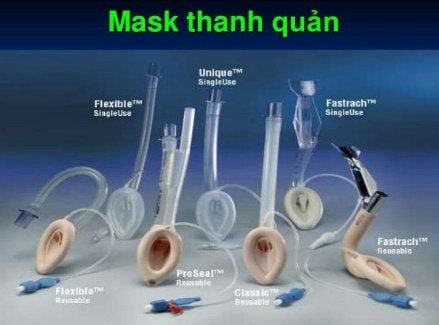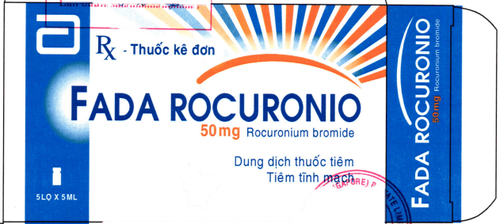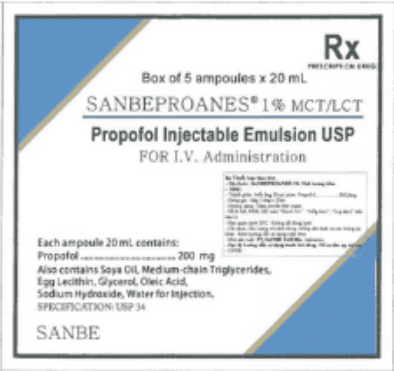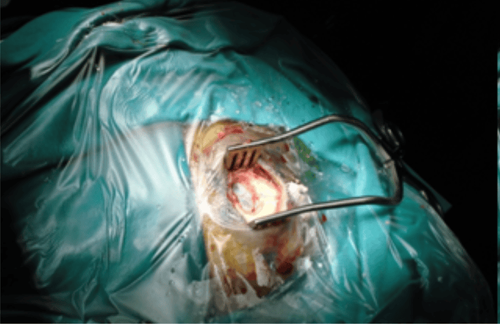This is an automatically translated article.
The technique of placing Proseal laryngeal mask is quite simple, without the use of muscle relaxants as well as laryngoscopes. Therefore, the role of Proseal Laryngeal Mask in anesthesia is to solve difficulties in tracheal intubation, avoid increasing gastric pressure, prevent aspiration as well as being able to withstand high pressure during pressure ventilation. positive.
1. Role of Proseal Laryngeal Mask in Anesthesia
To overcome the non-ventilation situation due to the intubation of the endotracheal tube, the laryngeal mask is a method that can control the airway in patient emergency and surgical anesthesia. The technique of placing a laryngeal mask is easy to perform, can be performed in the most minimal conditions, the time for placement is shortened, as well as the patient is ventilated earlier than the endotracheal tube, thus the rate of mortality and complications. markedly improved.
In addition, the laryngeal mask is placed in the oral cavity (where the squamous epithelium is resistant to frequent rubbing) so it causes less coughing or choking as well as less reflex stimulation in the vocal tract - Trachea - Bronchi should be a safe solution in airway control.
There are 2 types of laryngeal masks, which are Classic Laryngeal Mask and Proseal Laryngeal Mask. However, the classic laryngeal mask often causes pulmonary aspiration complications, does not protect the airways from aspiration when there is reflux from the stomach. Therefore, this method is not used for cases of full stomach, gastroesophageal reflux disease or obese patients...
Therefore, to improve the disadvantages of the neck laryngeal mask Classically, the Proseal laryngeal mask is often used instead. The Proseal Laryngeal Mask is based on the original design of the classic laryngeal mask. The role of the Proseal Laryngeal Mask in general anesthesia is known to solve most of the problems lacking with the classical laryngeal mask. The biggest difference between Proseal Laryngeal Mask technique in anesthesia with classical Laryngeal Mask is as follows:
Proseal Laryngeal Mask in anesthesia can ensure better controlled ventilation. Proseal laryngeal mask in anesthesia also has the ability to avoid aspiration of the lungs. In addition, the Proseal Laryngeal Mask technique in anesthesia can also diagnose the correct position of the tube. The technique of placing a Proseal laryngeal mask is quite simple, without the use of muscle relaxants and laryngoscopes. Therefore, the role of Proseal Laryngeal Mask in anesthesia is to solve difficulties in tracheal intubation, avoid increasing gastric pressure, prevent aspiration as well as being able to withstand high pressure during pressure ventilation. positive.
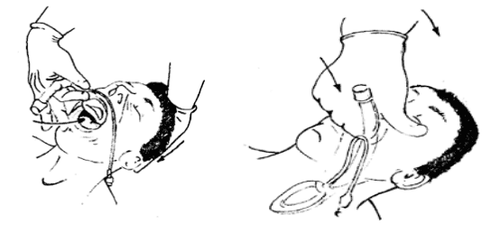
Mask thanh quản là phương pháp có thể kiểm soát đường thở trong cấp cứu bệnh nhân và gây mê phẫu thuật
2. Structure of Proseal Laryngeal Mask in Anesthesia
About the structure of Proseal laryngeal mask in anesthesia, including the body, anti-plugging part, air balloon, slot for placing instruments and valves. The structure of each specific part is as follows:
Body: There are two separate pipes. A tube with the esophagus (also known as the top tube) on the distal end of the mask, this type of tube can suck the fluid in the throat or a nasogastric tube can be placed to aspirate the gastric juices. The other tube connects to the esophagus (also called the respiratory tube). These two pipes are connected in parallel; Anti-plug: This part is made of harder material, surrounds the two-tube rod and the far 1/3 of the tube is horizontal to the front teeth; Air balloon: The air balloon is a soft, evenly dilated type, hugging the surface of the larynx, the hips, against the oropharyngeal organization, the air balloons; Slot for placing tools: This slot is located between the balloon and the corner of the 2 tubes, this slot has the effect of filling the medium to place or for the finger to follow the mask placement; Valve: In order to keep the air in the balloon from escaping, the tip is connected to a small air bag to check for curvature.
3. Indications and contraindications of Prosal Laryngeal Mask method
Indications of Proseal laryngeal mask method in anesthesia include:
Replace tiger pulse in general and emergency anesthesia; Replace the endotracheal tube in elective surgery when intubation is deemed unnecessary; Patients with difficult airways during intubation are prognostic or unexpected; Contraindications of Proseal Laryngeal Mask method in anesthesia include:
Patients with maxillofacial trauma; Small mouth opening cannot put a laryngeal mask; There is a tumor in the posterior abdomen; Stomach full; BMI > 35.
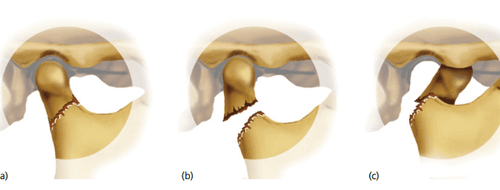
Chống chỉ định của phương pháp Mask thanh quản Proseal ở người bệnh bị chấn thương hàm mặt
4. Techniques to place Proseal Laryngeal Mask in Anesthesia
About the technique of placing Proseal Laryngeal Mask in anesthesia, there are 3 techniques to put it. Specifically, the techniques are as follows:
Placing the Proseal Laryngeal Mask in manual anesthesia: This technique is simple, giving high results even for novice users. Place the Proseal Laryngeal Mask in instrumental anesthesia; Placing the Proseal Laryngeal Mask in anesthesia through the guide tube: This method places a gastric tube or flexible plastic tube in the patient's esophagus, then inserts the PLMA tube. The method of placing Proseal Laryngeal Mask in anesthesia through the cannula usually gives the best results, avoiding the phenomenon of tube folding. However, this technique is very invasive, so it is often used in cases where the above two methods fail or in cases where intubation is difficult. To determine the correct position of the Proseal Laryngeal Mask, several testing methods can be used as follows:
No open phenomena appear when ventilation is under pressure of 20 cmH2O The curve of EtCO2 is square; Bubble test by applying a little gel to the tip of the DT tube and ventilating with 20cmH2O pressure will not show any deflation. In addition, not more than 1/3 of the anti-bite part is found on the outside and when pressing the chest, the gel does not move out; Notice a slight bulge on both sides of the front of the neck when the cuff is inflated; Insertion of a nasogastric tube through the DT branch is easy, this examination is very important to determine the correct position of the Proseal Laryngeal Mask. Currently, Vinmec International General Hospital is one of the hospitals that strictly applies safe surgical anesthesia practice standards according to international guidelines. Vinmec has a team of experienced anesthesiologists and nurses, modern equipment such as: nerve detectors, ultrasound machines, Karl Storz's difficult airway control system, comprehensive anesthesia monitoring system GE's AoA (Adequate of Anesthesia) including monitoring of anesthesia, pain and muscle relaxation will provide high quality and safety, helping patients to have adequate anesthesia, not wake up, and do not have residual muscle relaxants after surgery.
Vinmec Health System is also proud to be the first hospital in Vietnam to sign with the World Anesthesiology Association (WFSA) towards the goal of becoming the safest hospital for surgical anesthesia in Southeast Asia.
Please dial HOTLINE for more information or register for an appointment HERE. Download MyVinmec app to make appointments faster and to manage your bookings easily.




